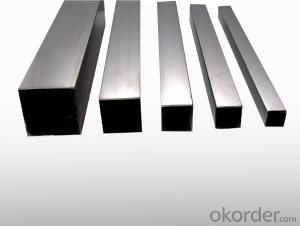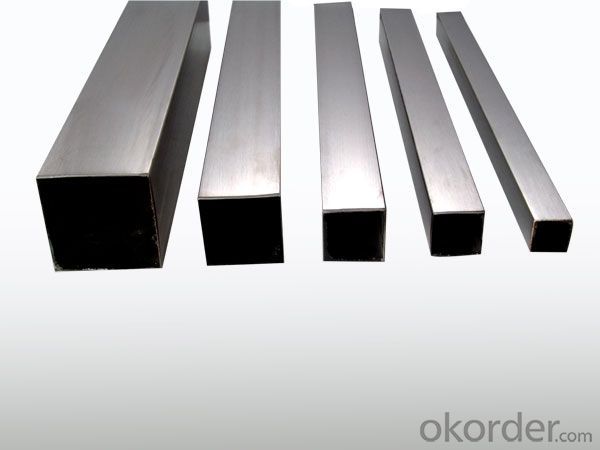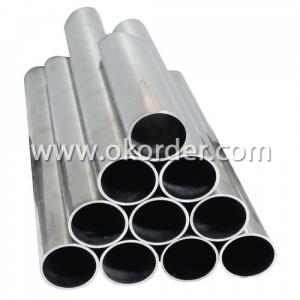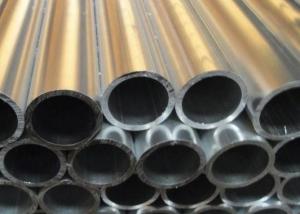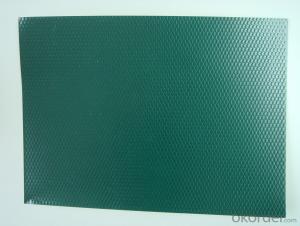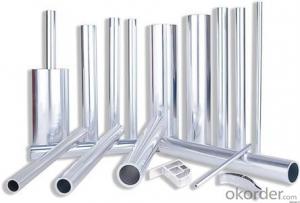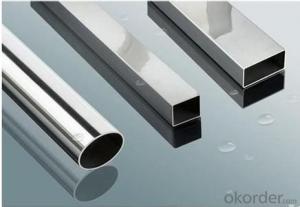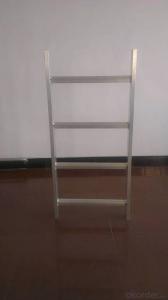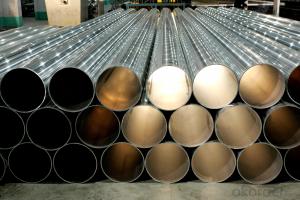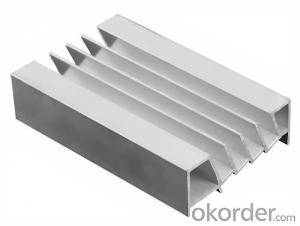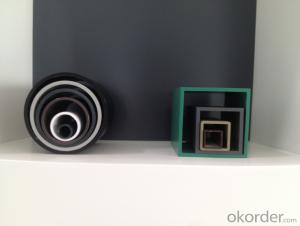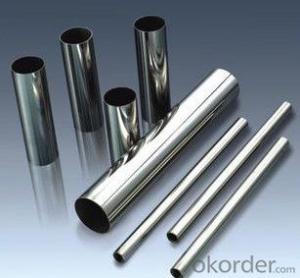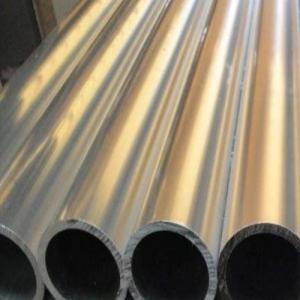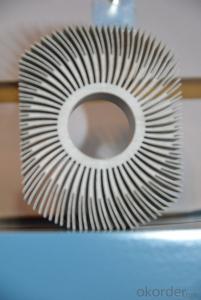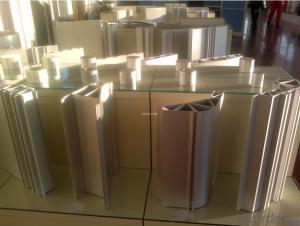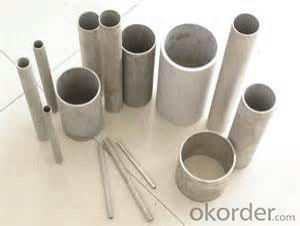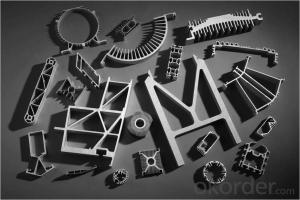Aluminum Pipes - Aluminium Tube
- Loading Port:
- China Main Port
- Payment Terms:
- TT OR LC
- Min Order Qty:
- -
- Supply Capability:
- -
OKorder Service Pledge
OKorder Financial Service
You Might Also Like
Quick Details
| Place of Origin: | Grade: | Shape: | |||
| Surface Treatment: | Outer Diameter: | Length: | |||
| Thickness: | Usage: | Hardness: | |||
| Alloy Or Not: | Temper: | Al (Min): | |||
| Wall Thickness: | Model Number: | Brand Name: |
Packaging & Delivery
| Packaging Detail: | Export standard for thin wall aluminum tube |
| Delivery Detail: | 35days |
Specifications
thin wall aluminum tube
1.out dia 8.0-200mm
2.wall thk 0.5-50mm
3.alloy 2024,2A12,2017,2A11,5052
4.temper H112,F,O ,T
thin wall aluminum tube
1.Specifications
Product | aluminum tube |
Thickness | 0.5mm-50mm |
Out diameter | 8.0mm-200mm |
Alloy grade | 1000 series : 1070A,1060,1100,1200 |
2000 series :2A11,2017,2A12,2024 | |
3000 series :3003 3A21 | |
5000 series :5A02,5052,5A03,5A05,5A06,5083,5086,5454 | |
6000 series :6061,6063,6A02,6082,6005 | |
Temper | H112 . F , O, T |
Surface | Mill Finish, Anodized, Powder Coated, Wooden Finish, Polish |
Packing | Export standard |
Payment Terms | 100% irrevocable L/C at sight or 30% T/T in advance as deposit,70% balance before shipment |
MOQ | 3 tons per size |
Delivery time | 45 days after receiving L/C or deposit |
Loading Port | China (any port in China ) |
Remark | Specific requirement of alloy grade, temper or specification can be discussed at your request |
- Q: Titanium tube pressure or aluminum tube withstand voltage?
- Titanium tube, of courseAskWhy, what basis?Chasing the answerIs titanium a aerospace material, aluminum? No, not really,
- Q: What is the tensile strength of the 6063T5 aluminum tube and what is the elongation rate?
- The tensile strength of 6063T4 aluminium tubes is about 150. The elongation rate is about 10%. T6's around 230. The elongation rate is about 8%As it were, you can Q me: 88099379 (Shanghai Xuan Sheng)
- Q: Will the aluminum tube (6063) anodized after the local needle hole shaped point, what is the reason for it, is the material problem or oxidation plant corrosion?
- You are the light, or the fog, if light, are certainly no oxidation treatment, that is, if the surface is like fog, that is normal. I have been working in this area, a few years, what are a little, in fact, no matter what, to ensure the material beautiful, do not have that you said.
- Q: How to obtain hollow aluminum tubes such as drawings by rolling?
- Then what is the shape of the mold? I am a beginner don't understand, but also trouble you to explain in detail the design such as a casting, a concise said hollow workpiece with the same shape, and then put the water into the aluminum molding, after cooling the mold parts get separated! If the workpiece is relatively small, the aluminum bar will be directly turned, drilling is also OK, big can also be a waste of materials!
- Q: How to control the hardness of aluminum pipe?
- As a kind of high strength aluminum alloy, heat treatment can be strengthened, annealing, quenching and heat under the condition of rigid plasticity, good welding, gas welding and argon arc welding in aluminum has the tendency of intergranular crack formation; aluminum hardening in quenching and cold cutting performance is good and bad in annealing state when.
- Q: Are aluminum pipes suitable for pulp and paper processing?
- Pulp and paper processing can benefit from the use of aluminum pipes. Aluminum possesses versatility and durability, making it a suitable material for this particular application. To begin with, aluminum pipes are lightweight, making them easier to handle and install compared to alternative materials. This characteristic can aid in reducing labor and transportation costs during the construction or maintenance of pulp and paper processing facilities. Furthermore, aluminum pipes exhibit exceptional resistance to corrosion. The pulp and paper industry involves the use of corrosive substances and chemicals in the processing of pulp and the production of paper. Aluminum's inherent resistance to corrosion makes it an appropriate option for transporting these substances without the risk of pipe degradation or contamination. Moreover, aluminum pipes possess high heat conductivity, which can prove advantageous in specific stages of pulp and paper processing that require temperature control. This heat conductivity allows for efficient heat transfer, leading to enhanced energy efficiency and cost savings. Additionally, aluminum is a recyclable material, aligning with the industry's growing emphasis on sustainability and environmental responsibility. By recycling aluminum pipes, greenhouse gas emissions can be reduced, and natural resources can be conserved. Nevertheless, it is vital to consider the specific requirements of each application within the pulp and paper processing industry before settling on a material choice. Some processes or environments may necessitate different materials based on factors such as pressure, temperature, or chemical compatibility. Seeking guidance from industry experts or engineers can aid in determining the most suitable material for a particular application.
- Q: Do aluminum pipes have any specific limitations in terms of length?
- The length of aluminum pipes is subject to certain limitations, which are determined by factors such as the diameter, thickness, and intended use of the pipe. One limitation is the potential for buckling or collapse when subjected to excessive weight or pressure. This is particularly relevant for longer aluminum pipes with smaller diameters or thinner walls. By carefully selecting appropriate pipe dimensions and reinforcement methods, this limitation can be mitigated through proper engineering and design considerations. Another factor that affects the length limitations of aluminum pipes is their expansion and contraction in response to temperature changes. Aluminum has a higher coefficient of thermal expansion compared to materials like steel, causing it to expand and contract more significantly. This can lead to stresses and potential damage, especially in longer pipes where temperature differences may be more pronounced. To address this, it is essential to account for these thermal effects in the design and ensure appropriate allowances are made. Furthermore, the transportation and handling of aluminum pipes can impose limitations on their length. Longer pipes may be challenging to transport and maneuver due to their size and weight. Specialized equipment or techniques may be necessary to ensure safe and efficient handling. To summarize, while there are limitations on the length of aluminum pipes, these can be overcome through proper engineering, design considerations, and handling methods. Consulting experts and adhering to industry standards are crucial to ensuring the safe and effective use of aluminum pipes in any given application.
- Q: Do aluminum pipes require any anti-corrosion treatment?
- Indeed, anti-corrosion treatment is necessary for aluminum pipes. Despite aluminum's innate resistance to corrosion, it can still be vulnerable to specific corrosive surroundings. To bolster the endurance and strength of aluminum pipes, anti-corrosion treatments are employed, particularly when they come into contact with harsh conditions like high levels of humidity, acidic or alkaline substances, and saltwater. Anodizing, powder coating, and the application of protective coatings or paints are commonly utilized anti-corrosion treatments for aluminum pipes. These treatments establish a barrier between the aluminum surface and corrosive elements, hindering or decelerating the corrosion process and ensuring the pipes remain in optimal condition for extended periods.
- Q: What are the different diameters available for aluminum pipes?
- The manufacturer and specific requirements can cause variation in the available diameters for aluminum pipes. Nonetheless, aluminum pipes typically span a range of diameters starting from as small as 0.25 inches (6.35 mm) and extending to larger sizes like 12 inches (304.8 mm) or even larger. The intended use of the aluminum pipes can also influence the specific diameter options available since various industries and applications may necessitate specific sizes. To ensure that your specific needs are met, it is advisable to consult the manufacturer or supplier and ascertain the precise range of diameters for aluminum pipes.
- Q: Why magnetic ball and ball falls into the hollow tube, a magnetic ball fell to the ground slowly
- Aluminum is a conductor, magnet is equivalent to the magnetic field, that is, the ring conductor in the magnetic field to do cutting magnetic induction line, moving conductor induction electromotive force, and then produce electric field, thereby hindering the magnetic field changes, so that small ball movement slow! The concept of the place may have actual meaning should be in place please understand!
Send your message to us
Aluminum Pipes - Aluminium Tube
- Loading Port:
- China Main Port
- Payment Terms:
- TT OR LC
- Min Order Qty:
- -
- Supply Capability:
- -
OKorder Service Pledge
OKorder Financial Service
Similar products
Hot products
Hot Searches
Related keywords
